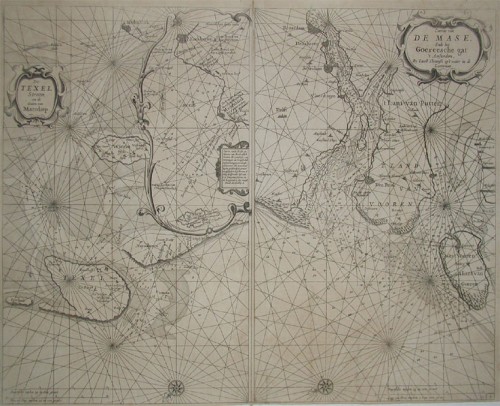Braun, Georg & Hogenberg, Franz
Tienen. - Tiena
Brabantiae Opp: ad amnem Geta, unde casei, qui inde nomen habent, magnus prouentus, estque hic templum S. Germanni, Canonicorum Collegio, ornatum.
Eigenschaften
- Published: G. Braun & F. Hogenberg , Cologne
- Published date: 1572
- Type: Antique Map, map
- Technique: Copper engraving / Uncolored
- Issue date: 1572-1610
- Category: Tienen
- Size: 338 by 418mm (13 by 16 inches).
- Bibliography: Vol. III / #13.
- Stock number: 11377
- Condition: In very good condition. 338 by 418mm (13 by 16 inches).
Article description
Article description
Copper engraving, uncolored as published in the townbook "Civitates Orbis Terrarum" by Georg Braun and Franz Hogenberg. The plan view from the southwest shows the formerly more populous Belgian town lying within extensive walls that also encompass farmlands and fields. On open ground on the old cattle market, at the very centre of the town, rises the large church of Sint-Germanus. Behind it to the left is the Grote Markt, part of which lies on drained marshland, whence the name of the Gothic church on the east side of the square: Onze-Lieve-Vrouw-ten-Poel. Tienen was probably founded around AD 800 by the Holstein branch of the Thienen-Adlerflycht dynasty, on a site already inhabited in Celtic times. In the late Middle Ages the town lived from cloth weaving; caught up in wars in the 16th century, however, it rapidly declined and in 1635 was almost completely destroyed. (Taschen) Georg Braun (also Brunus, Bruin; 1541 – 10 March 1622) was a topo-geographer. From 1572 to 1617 he edited the Civitates orbis terrarum, which contains 546 prospects, bird's-eye views and maps of cities from all around the world. He was the principal editor of the work, he acquired the tables, hired the artists, and wrote the texts. He died as an octogenarian in 1622, as the only survivor of the original team to witness the publication of volume VI in 1617. Braun was born and died in Cologne. His principal profession was as a Catholic cleric. However, he spent thirty-seven years as canon and dean at the church, St. Maria ad Gradus, in Cologne. His six-volume work was inspired by Sebastian Münster's Cosmographia. In form and layout it resembles the 1570 Theatrum orbis terrarum by Abraham Ortelius, as Ortelius was interested in a complementary companion for the Theatrum. The Braun publication set new standards in cartography for over 100 years. Frans Hogenberg (1535–1590, from Mechelen) created the tables for volumes I through IV, and Simon van den Neuwel created those for volumes V and VI. Other contributors were Joris Hoefnagel, Jacob Hoefnagel, cartographer Daniel Freese, and Heinrich Rantzau. Works by Jacob van Deventer, Sebastian Münster, and Johannes Stumpf were also used. Primarily European cities are depicted in the publication; however, Cairo Casablanca and Mexico City as well as Cuzco on one sheet are also included in volume I, whereas Tunis is featured in volume II. Frans Hogenberg (1535–1590) was a Flemish and German painter, engraver, and mapmaker. Hogenberg was born in Mechelen in Flanders as the son of Nicolaas Hogenberg. In 1568 he was banned from Antwerp by the Duke of Alva and travelled to London, where he stayed a few years before emigrating to Cologne. He is known for portraits and topographical views as well as historical allegories. He also produced scenes of contemporary historical events. Hogenberg died in Cologne. (Wikipedia)Brabantiae Opp: ad amnem Geta, unde casei, qui inde nomen habent, magnus prouentus, estque hic templum S. Germanni, Canonicorum Collegio, ornatum.
Vol. III / #13.
Recently viewed products






